Rubia cordifolia
Rubia cordifolia
1. The products in our compound library are selected from thousands of unique natural products; 2. It has the characteristics of diverse structure, diverse sources and wide coverage of activities; 3. Provide information on the activity of products from major journals, patents and research reports around the world, providing theoretical direction and research basis for further research and screening; 4. Free combination according to the type, source, target and disease of natural product; 5. The compound powder is placed in a covered tube and then discharged into a 10 x 10 cryostat; 6. Transport in ice pack or dry ice pack. Please store it at -20 °C as soon as possible after receiving the product, and use it as soon as possible after opening.
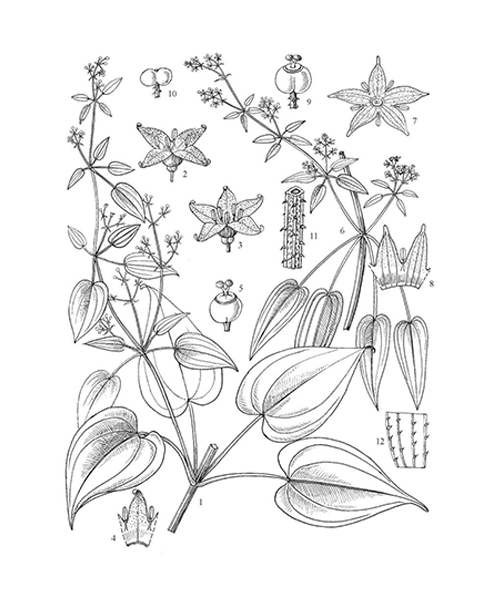
Natural products/compounds from Rubia cordifolia
- Cat.No. Product Name CAS Number COA
-
BCN6047
Rubiadin117-02-2
Instructions

-
BCN9074
3-(β-D-Glucopyranosyloxy)-1,6-dihydroxy-2-methyl-9,10-anthracenedione125906-49-2
Instructions

-
BCN7871
Rubioncolin C132242-52-5
Instructions

-
BCN6375
1,4-Dihydroxy-2-carbomethoxy-3-prenylnaphthalene-1-O-beta-glucopyranoside1415729-43-9
Instructions

-
BCN8571
2-Amino-3-carboxy-1,4-naphthoquinone173043-38-4
Instructions
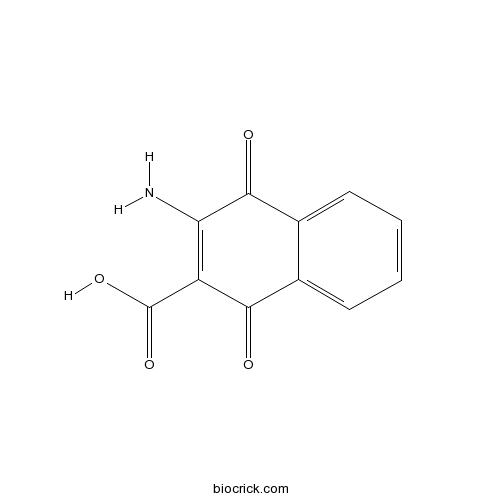
-
BCN8601
Rubipodanone A2170211-22-8
Instructions
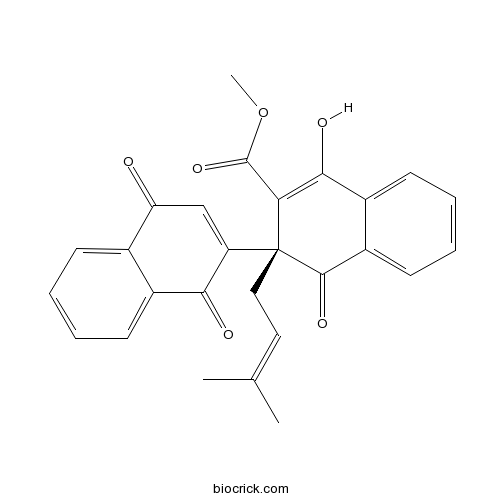
-
BCN8249
Lucidin 3-O-glucoside22255-29-4
Instructions
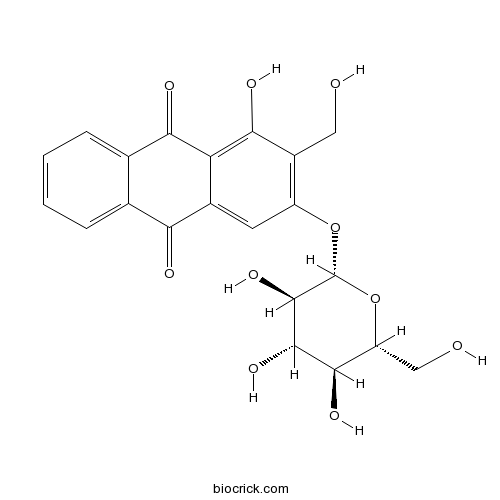
-
BCN8584
Lucidin 3-O-primeveroside29706-59-0
Instructions

-
BCN3511
Rubinaphthin A448962-05-8
Instructions

-
BCC1709
Lucidin478-08-0
Instructions
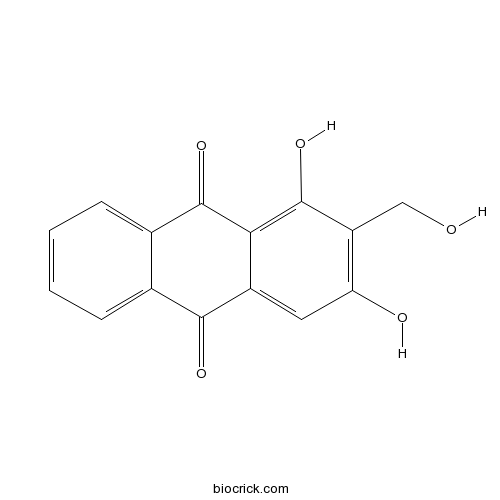
-
BCN8588
Rubiayannone A517978-25-1
Instructions

-
BCN5742
Mollugin55481-88-4
Instructions

-
BCN8247
Dihydromollugin60657-93-4
Instructions
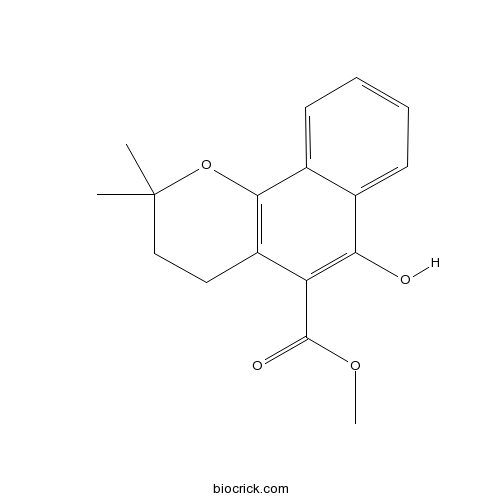
-
BCN3478
1-Hydroxy-2-methylanthraquinone6268-09-3
Instructions
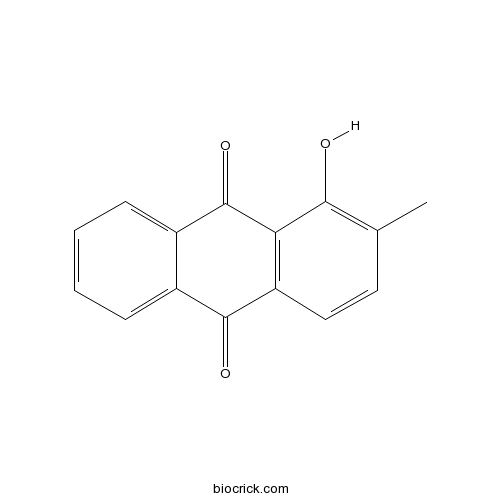
-
BCN3479
Alizarin72-48-0
Instructions

-
BCN3477
Purpurin81-54-9
Instructions
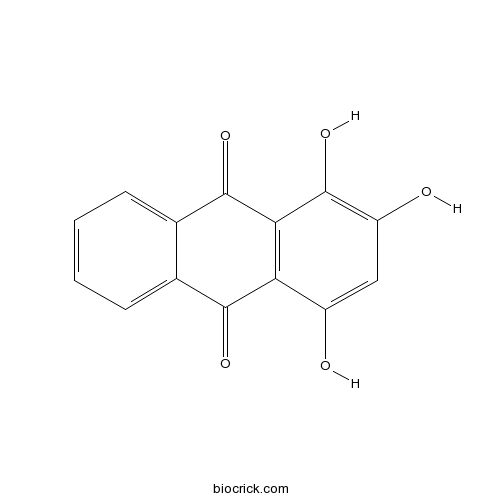
-
BCN4425
6-Hydroxyrubiadin87686-86-0
Instructions

-
BCN6384
1,3,6-Trihydroxy-2-methylanthraquinone 3-O-(6'-O-acetyl)-alpha-L-rhamnosyl-(1->2)-Beta-D-glucoside87686-87-1
Instructions

-
BCN8732
1,3,6-Trihydroxy-2-methylanthraquinone 3-O-alpha-L-rhamnosyl-(1->2)-beta-D-glucoside87686-88-2
Instructions

-
BCN7597
Methyl 1,4-bisglucosyloxy-3-prenyl-2-naphthoate90685-26-0
Instructions

ISSR Characterization and Quantification of Purpurin and Alizarin in Rubia cordifolia L. Populations from India.[Pubmed: 30039443]
Rubia cordifolia L., is an industrially viable medicinal crop and is widely exploited for the therapeutic potential of its bioactive metabolite, purpurin. The present investigation aimed to explore the chemotypic and molecular variability in seven wild populations of R. cordifolia from South Eastern Ghats region of India. Thirty-eight individuals were assessed for molecular fingerprinting (ISSR markers) and densitometric quantification of purpurin and alizarin. The populations of Yelagiri Hills and Shervaroy Hills contained the highest levels of alizarin (0.115 and 0.093%, respectively) while Pachamalai and Kolli Hills revealed the highest purpurin content (0.284 and 0.280%, respectively). Genetic diversity was generally higher in the same populations that produced higher metabolite content, with the exception of Pachamalai, suggesting a highly prioritized conservation concern. The study revealed a Nei's total gene diversity at species level of 0.266 and of 0.187 at population level, with an average population genetic differentiation of 0.28. No clear genetic or chemical structure was retrieved between the studied populations, with individuals from different locations clustering together, and no significant correlation was obtained between metabolites and genetic diversity or between these and the populations' geographic distances.


